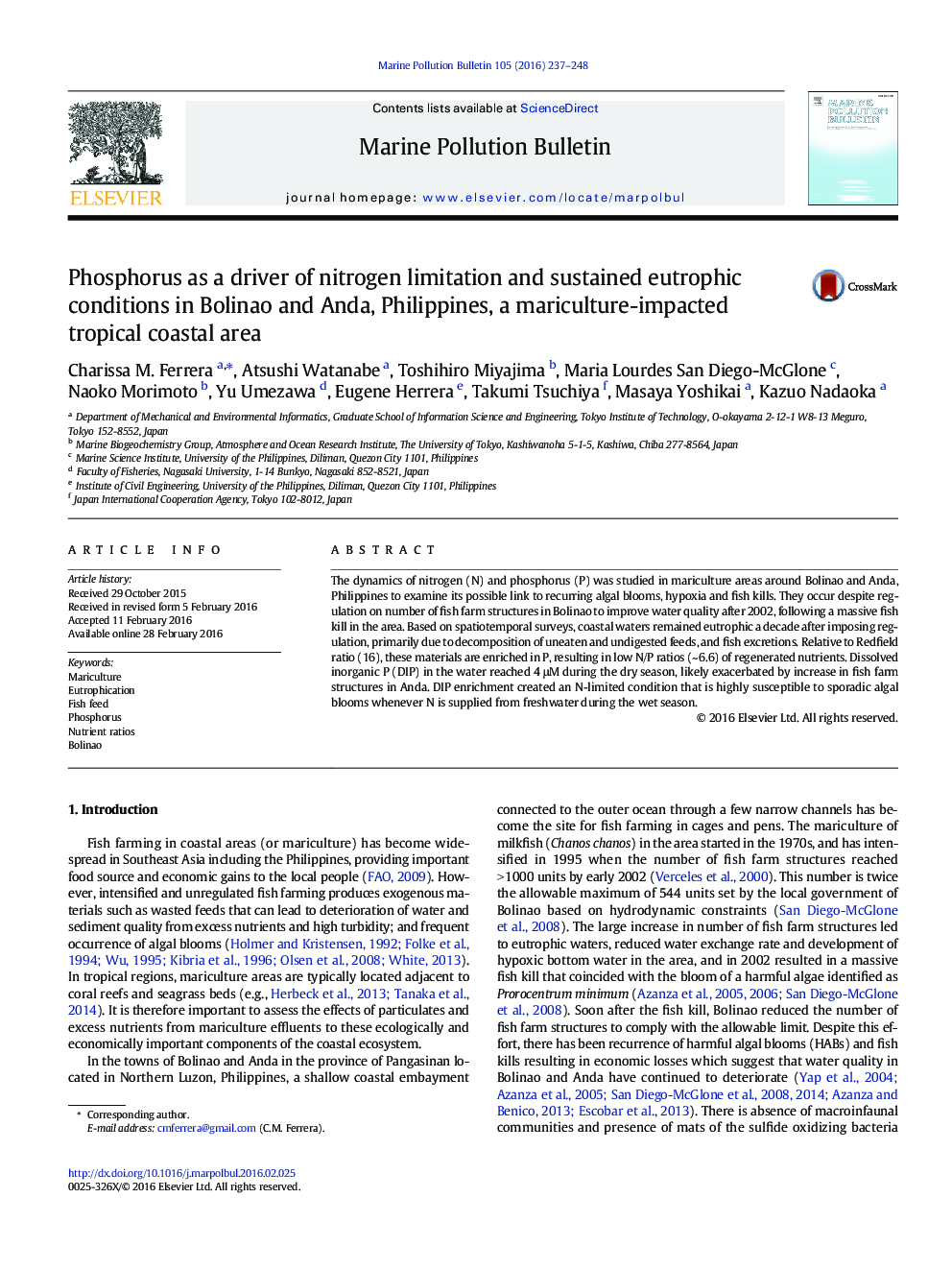| Article ID | Journal | Published Year | Pages | File Type |
|---|---|---|---|---|
| 4476536 | Marine Pollution Bulletin | 2016 | 12 Pages |
•Nutrient sources to an intensive mariculture area in the Philippines were provided.•High dissolved inorganic phosphorus is due to wasted feeds and fish by-products.•DIP continues to increase due to fish farm structure increase at adjacent area.•High DIP during dry season results in strong nitrogen (N)-limited conditions.•During onset of wet season, rivers supply N that triggers algal blooms.
The dynamics of nitrogen (N) and phosphorus (P) was studied in mariculture areas around Bolinao and Anda, Philippines to examine its possible link to recurring algal blooms, hypoxia and fish kills. They occur despite regulation on number of fish farm structures in Bolinao to improve water quality after 2002, following a massive fish kill in the area. Based on spatiotemporal surveys, coastal waters remained eutrophic a decade after imposing regulation, primarily due to decomposition of uneaten and undigested feeds, and fish excretions. Relative to Redfield ratio (16), these materials are enriched in P, resulting in low N/P ratios (~ 6.6) of regenerated nutrients. Dissolved inorganic P (DIP) in the water reached 4 μM during the dry season, likely exacerbated by increase in fish farm structures in Anda. DIP enrichment created an N-limited condition that is highly susceptible to sporadic algal blooms whenever N is supplied from freshwater during the wet season.
